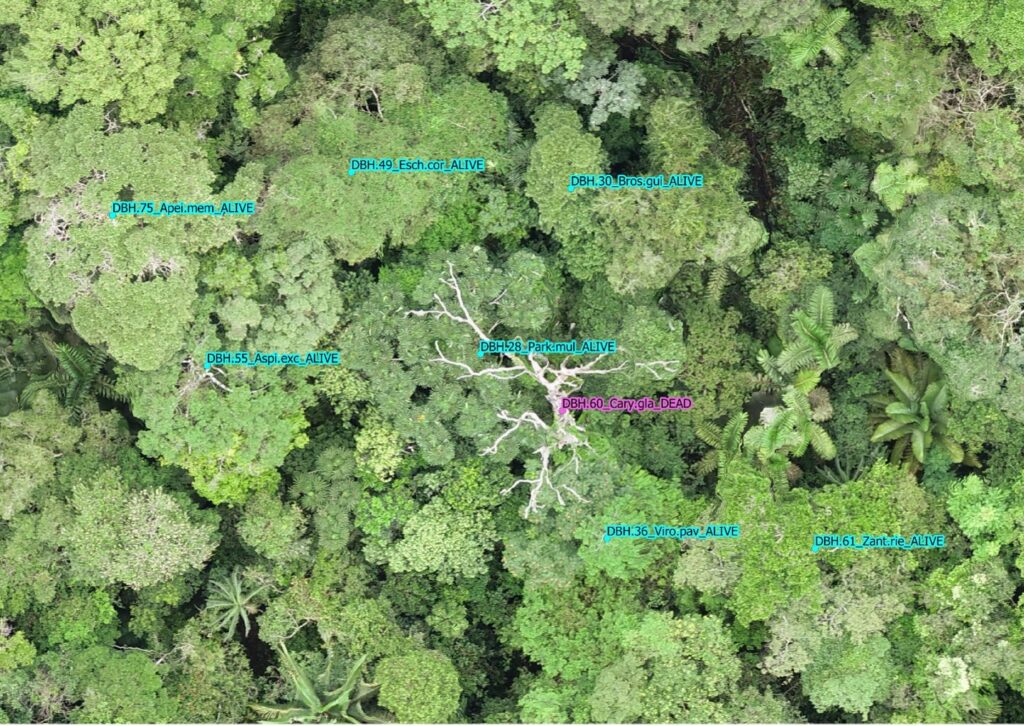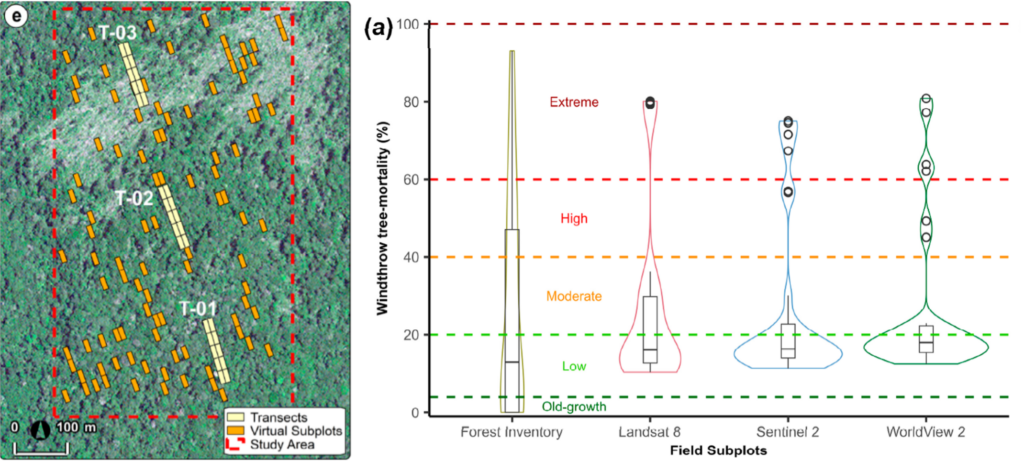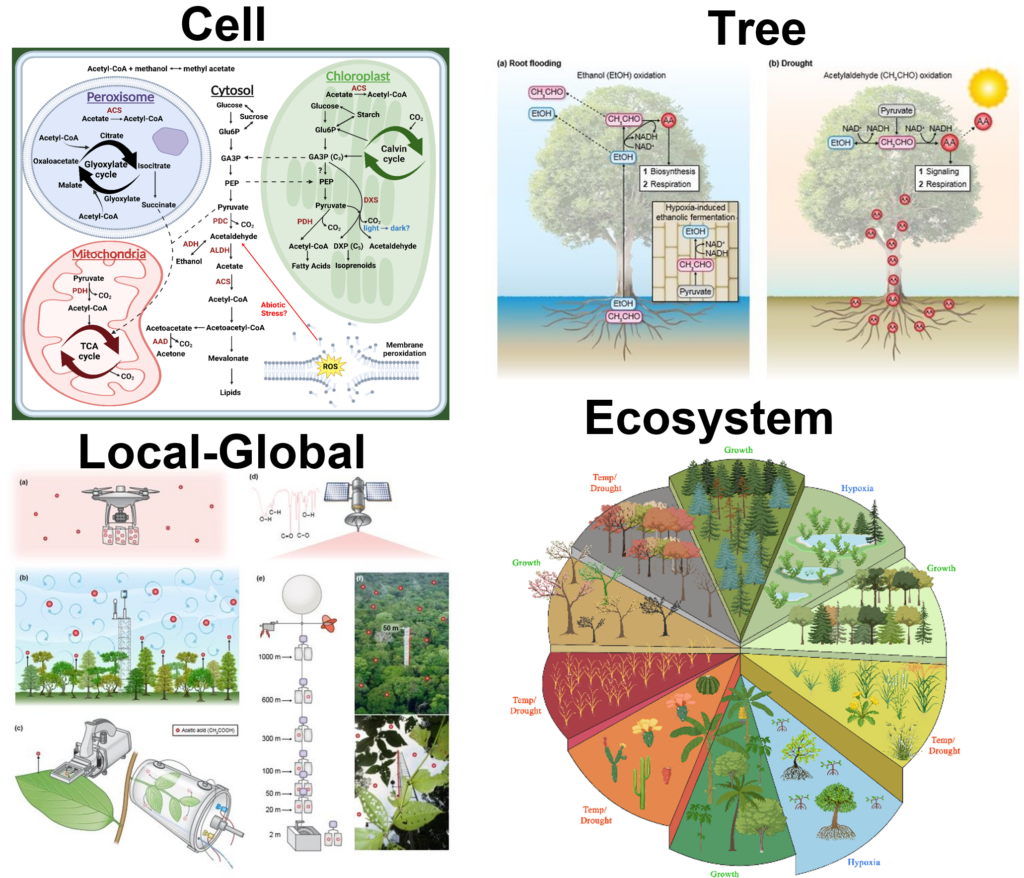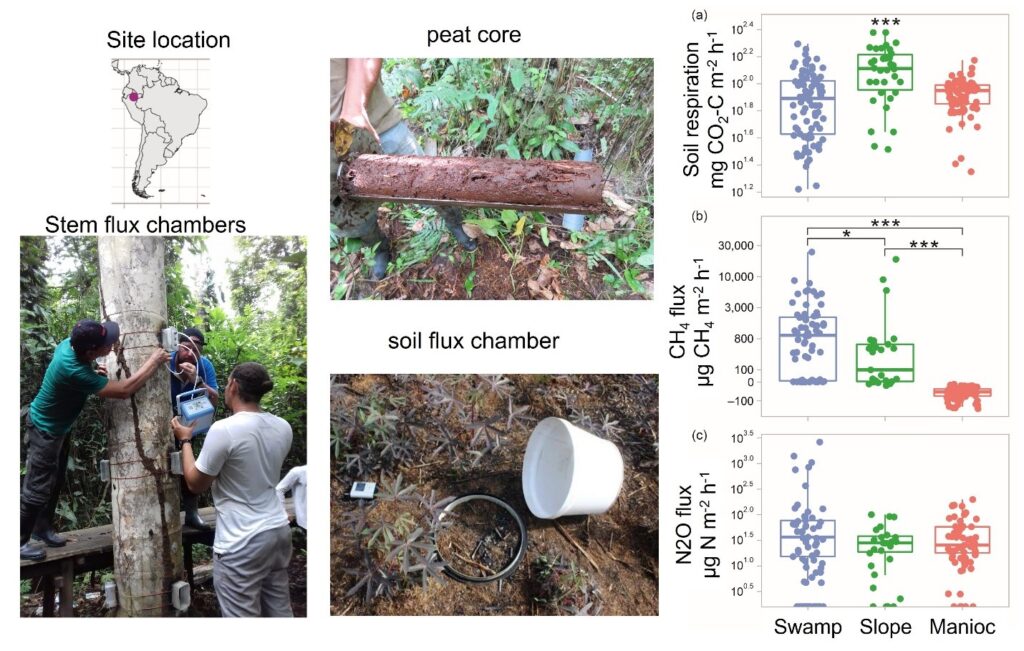Using satellite data, researchers assessed water stress in degraded forests and found that structure strongly mediates evapotranspiration in these forests.
 Examples of intact forests (left) and forests degraded by selective logging (middle) and fires (right) in the Amazon Forest. Forest degradation changes forest structure and the way the forest exchanges energy and water with the atmosphere. Photos by Ekena Rangel Pinagé.
Examples of intact forests (left) and forests degraded by selective logging (middle) and fires (right) in the Amazon Forest. Forest degradation changes forest structure and the way the forest exchanges energy and water with the atmosphere. Photos by Ekena Rangel Pinagé.
The Science
Forest degradation through fires and logging is common in the Amazon and changes forest structure. However, little is known on the effects of degradation on the way tropical forests transpire water. Using high-resolution remote sensing of forest structure from spaceborne lidar (GEDI) and evapotranspiration (ET) derived from Landsat, researchers assessed the seasonal water stress and its relationship with forest structure across intact and disturbed forests in the Amazon. They found that forest structure exerts a stronger control on ET in the more disturbed/drier forests than in intact or lightly disturbed forests.
The Impact
New satellite data and products allow us to measure forest structure and evapotranspiration across large areas. With these data, we can better understand how human activities in tropical forests are changing the earth’s water and energy cycles. This study found that forest structure influences evapotranspiration more than climate does. In addition, the team found that forest degradation may make the Amazon forests limited by water. This matters because intact forests in the Amazon are normally limited by energy, not water. These findings have important implications for the global water balance and rainfall patterns.
Summary
Deforestation, timber extraction, and forest fires disturb large areas in the Amazon region. These disturbances alter how forests function. Previous work focused on how deforestation affects the water and energy cycles. To understand how degradation changes the water and energy fluxes, this research used many satellite-based data. The research team analyzed evapotranspiration, land surface temperature, and forest structure (tree cover and forest height) data over a region in the Southern Amazon. This region has a mix of deforested, degraded and intact forests, so researchers could study the effects of forest structure on water and energy cycles.
The research team found that water stress conditions started early into the dry in croplands and pastures. They also found that second-growth and burned forests experience stronger water stress than logged and intact forests. Moreover, they found that forest structure is moderately related to evapotranspiration and temperature, but only in the most disturbed forests. This results of this study show the importance of intact forests in maintaining water balance in the Amazon region. Their findings also suggest that disturbed forests may be less able to cope with the changing climate.
Contact
Ekena Rangel Pinagé
College of Forestry, Oregon State University
ekenapinage@gmail.com
Marcos Longo
Lawrence Berkeley National Laboratory
mlongo@lbl.gov
Funding
This research was supported by the Next Generation Ecosystem Experiments-Tropics, funded by the U.S. Department of Energy, Office of Science, Office of Biological and Environmental Research, the Australian Government Research Training Program Scholarship, the USDA Forest Service Pacific Northwest Research Station and International Programs, and the NASA Postdoctoral Program, administered by Universities Space Research Association under contract with NASA. The research carried out at the Jet Propulsion Laboratory, California Institute of Technology, was under a contract with the National Aeronautics and Space Administration.
Publication
Rangel Pinagé, E., D. Bell, M. Longo, C. A. Silva, O. Csillik, A. Huete. “Surface Energy Dynamics and Canopy Structural Properties in Intact and Disturbed Forests in the Southern Amazon.” Journal of Geophysical Research: Biogeosciences, 128(9), e2023JG007465 (2023). http://doi.org.10.1029/2023JG007465




